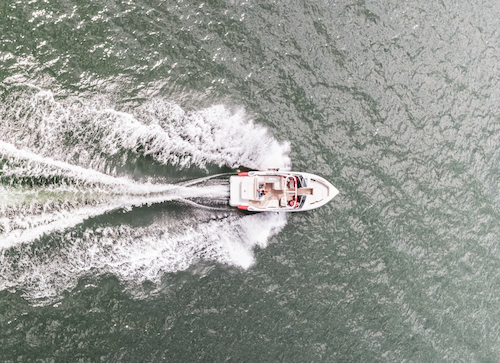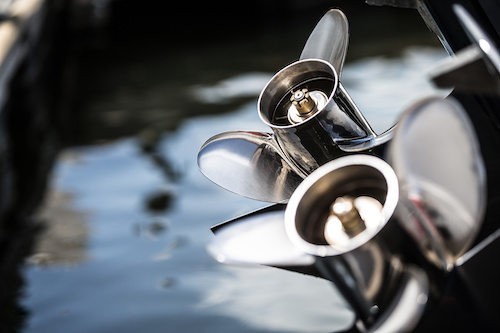Part of the fun of boating is simply the thrill of going fast on the water. And if fast is good, even faster must be better. Here are some simple ways to help almost any family boat reach its full speed potential.
3 Ways to Make a Boat Faster
- Reduce weight.
- Don't over-trim.
- Change your propeller.
Now, let's dive into the details of each of these techniques...
1. Reduce Weight
Reducing weight is like finding free horsepower, and many boat owners are surprised how much weight they can leave on the dock.
- Start at the bow and work your way back, clearing out every storage compartment, and then put back only the essentials.
- The spare cooler, the extra fishing rods, the old bottles of sunscreen, the extra towels—each item may not weigh much but together it all adds up. We’ve seen boat owners jettison 250 pounds of “stuff” they didn’t really need on board.
- A lighter boat will accelerate more quickly and run with reduced drag because the hull rides a little higher in the water. It may also be more responsive to trim, which can further reduce drag.
- Try to place heavier items you do want to keep on board, like a spare propeller, in an aft storage compartment so they are not weighting down the bow.
Finally, on those days you want to run as fast as possible, drain the fresh water and holding tanks if your boat is so equipped, and head out with less than a full tank of fuel.
2. Don't Over-Trim
The old racer’s motto when in doubt trim it out is true up to a point. Trimming out the sterndrive or outboard lifts the bow, reduces the wetted surface of the hull and thus drag, and increases speed. But if you just trim to the limit you could be over-trimming, and actually losing top speed.
As you trim out the drive, the prop gets closer to the surface of the water and will eventually ventilate, or become contaminated with air, and loose its grip on the water. Engine RPM might keep climbing, but speed will start to go down. This is easy to see with a GPS speedometer or any device with a GPS-generated speed display.
- Run the boat up to full throttle and then very gradually add trim, just bumping the trim button with your thumb, and watch the boat speed.
- If you hear a slight change in pitch in the sound coming from behind the boat, the prop could be starting to slip, and your speed may drop by 1 or 2 MPH.
- Sometimes you can’t hear the prop slip, however, which is why the GPS is helpful.
- If boat speed goes down, bump the trim back down just a little until the prop “hooks up” again and your speed is restored.
How to Trim a Boat: Step-by-Step Guide
3. Change Your Propeller
Changing propellers may make a big difference in boat performance (learn more in Boat Propellers: Repairs and Replacements), but propping is a complicated science and a high-performance prop is a significant investment—$600 to $800 and more—so you want to get it right, which means seeking some expert advice from a boat dealer or propeller shop.
If you are running an aluminum prop, changing to even a basic stainless steel prop will usually improve top speed. Because stainless steel is stronger than aluminum, the blades on a stainless prop can be thinner, which reduces drag in the water. Those blades will also not flex under load like those of an aluminum prop, and so will maintain consistent performance.
Ideally engine RPM should be near the top of the WOT operating range, which you can find in your owner’s manual. An outboard may have a WOT range of 5200-6000 RPM, for example, while a sterndrive engine has a WOT range of 5000-5400 RPM. If your WOT RPM is too high or too low, you’ll want to try a prop with more or less pitch. Adding propeller pitch will decrease wide-open throttle (WOT) engine speed, while subtracting pitch will increase WOT RPM.
Changing propeller pitch is like changing gears up or down on a bicycle—in a low gear you can ride away quickly but soon your legs will be spinning and you won’t go very fast. In a high gear you’ll need to mash the pedals to start moving but you’ll eventually reach a faster top speed. In this regard, propping for top speed may produce unsatisfactory acceleration—the boat will take longer to get on plane.
The perfect propeller needs to match the boat power, weight, and hull type. This is where expert advice comes in handy. Some dealers will let you test a prop before purchasing, and may even have “demo” props on the shelf just for that purpose.
Read Next: Understanding a Boat's Propeller Pitch
You May Also Like:





